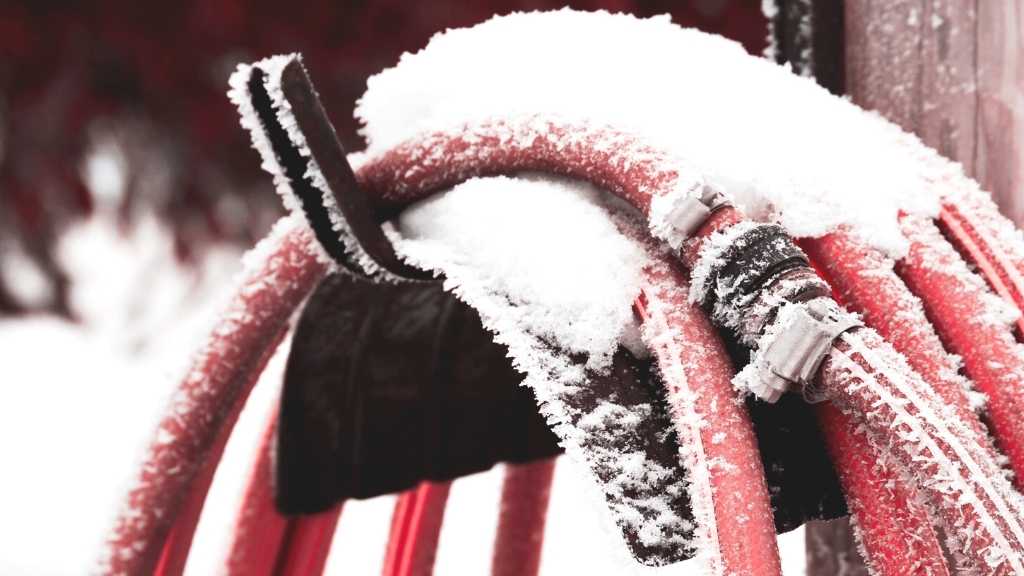Hi there, you probably reached this post because you already have a garden hose and you want to get more ideas on how to use your garden hose in more and different ways than before.
Garden water hoses are used, as implied by their name, for transporting water that is needed for while taking care of a vegetable garden, small backyard with decorative plants, lawn and even for taking care of pot plants. However, you may find different other daily activities which can be considerably improved if using a garden hose.
The main purpose of this post is to list such activities where if garden hoses are used, that might help you finish your work easier and in a timely fashion.
One of the most common alternative use for water hoses is to use them for cleaning different objects or outdoor sections of the house.
Make sure you continue reading and, who knows, you might find a different purpose for your water hose even sooner than you thought.
So let’s dig right in!
1. Use a garden hose to clean your house exterior windows
Unlike the indoor side of the house windows, the exterior windows get dirty by accumulating dust, spider nets, and other types of non-greasy dirt.
Normally these can be easily cleaned by using only water.
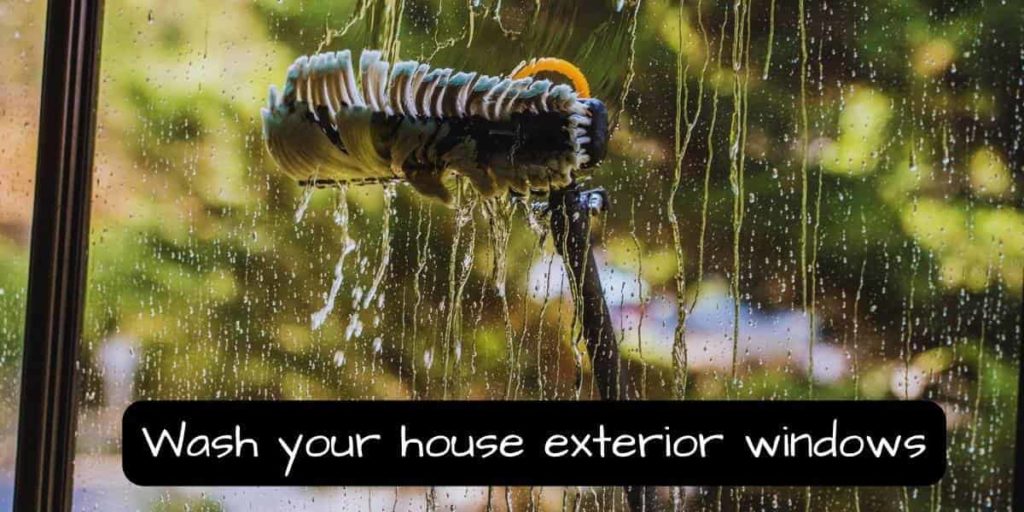
You can, however, use special window cleaning solutions depending on your personal preferences, but it is important to make sure you choose a cleaning solution that is sustainable, approved for outdoor use, and plant and pet safe.
The simple process in steps should be like this: double-check the window to make sure it is closed, grab a water garden hose, connect it to the outdoor faucet, setup the sprayer on the power jet mode and soak the window carefully, making sure you do not miss any spots. Perform this action until all the dirt is removed. If the windows do not seem clean yet, you can also use a brush to clean thoroughly where needed and a squeegee to dry the window as the last step. You can also wait for it to get dried naturally, without using any additional tool.
A second option is to connect your garden hose to a pressure washer machine. Most pressure washers have windows cleaning kits included among their accessories. But if yours does not have such an option, you can still use the normal power jet to clean the windows as explained previously. While using a pressure washer you can reach out to the upper floor windows easily, without the need of using a ladder.
2. Use your water hose to clean the house siding and stucco
Using a pressure washer to clean the house siding might cause damages in time, especially if you have vinyl siding on your house. The house siding dirt can be more difficult to clean as the siding does not only collect dust but in time it can also develop mold, mildew, and algae.
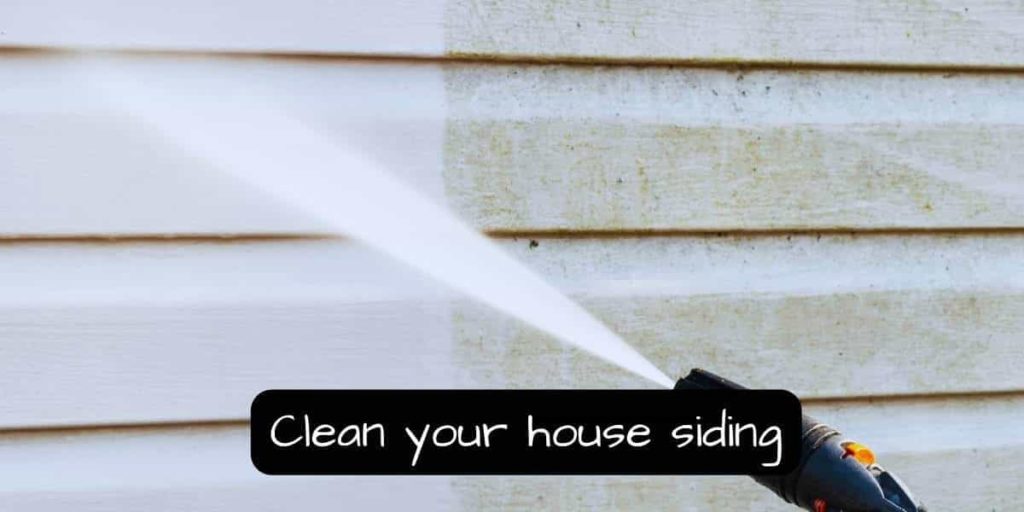
Therefore, to properly clean your house siding you should consider one of the available brands of professional house wash solutions, such as 30 Seconds Outdoor cleaner or Mold Armor, specially designed to clean this part of the house.
These cleaning solutions were tested on several siding materials and they should be safe to use and effective in cleaning vinyl, brick, and concrete, painted wood, stucco, trim, and other types of materials. They are also safe to use from both the house and its surrounding environment perspective. Additionally, they are specially designed to remove any stains on the outside of a house, caused by mold, algae, mildew, and they clean it in a matter of minutes once sprayed on the desired surface.
The process in simple steps is to connect your water garden hose to the outdoor faucet and connect it to the house wash solution hose connector on the other side.
Then turn the nozzle on the cleaning solution on Clean and start spraying it on the house siding or stucco.
Give it a little time to soak in the dirt, some minutes or less depending on the brand, and then switch the nozzle to Rinse and rinse off the house siding from the upper level towards the ground.
Repeat the process if necessary.
3. Use a gardening hose to clean the outdoor patio
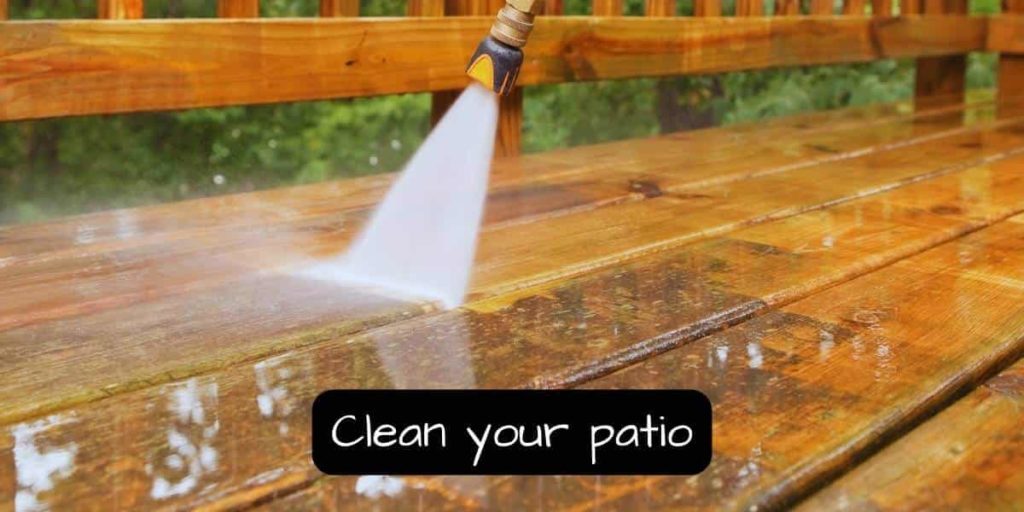
If you need to clean your outdoor patio but you don’t have a pressure washer, you don’t need to worry as long as you have a standard garden hose available.
It might take a bit of extra physical work, but it will do the job.
Connect your garden hose to an outdoor faucet and spray the patio area using the power jet mode of the hose nozzle, one section at a time, until all the dirt is properly soaked. If necessary, you can also use a brush or broom to remove the stubborn stains and dirt.
Also, depending on the amount of dirt on the patio, using a special outdoor cleaning solution, such as the ones described in the previous section, might considerably help. Rinse the dirt using the water hose from time to time, until you reach the desired result.
4. Use the backyard garden hose to wash an area rug
If the area rug that needs cleaning is an oriental one, made of wool, or other material that requires special care or an expensive rug, our recommendation is to reach out to specialists and avoid cleaning it by yourself, as there are high chances of damaging them.
For the other standard, cheaper area rugs you can try the below cleaning method, using basically the products and cleaning accessories you already have at home.
You will need a garden hose, a bucket filled with water, a brush, and carpet shampoo.
- Take the are rug outside and lay it down on a flat surface.
- Give it a good vacuum as a first step.
- Soak the area rug with water using your garden water hose.
- Fill the bucket with water using the hose and mix some of the carpet shampoos in the bucket, using the ratio mentioned on the carpet shampoo label.
- Spread the resulted cleaning mixture evenly on the area rug and start scrubbing it with the brush, especially on the dirt spots, if any.
- Let the shampoo sit in for up to 20 minutes.
- Rinse the area rug using the garden hose with the nozzle set on jet mode.
A pressure washer can fasten the rinsing process, but it can also be done by using a standard garden hose. - Continue rinsing until all the foam has drained from the rug and the cleaning process is completed.
5. Use the hose to clean different filter screens
Using a garden hose to clean filter screens or window screens is a great solutions.
To clean the window screens first remove them from the window setup.
The process described below can be used for different types of filter screens that need cleaning from time to time.
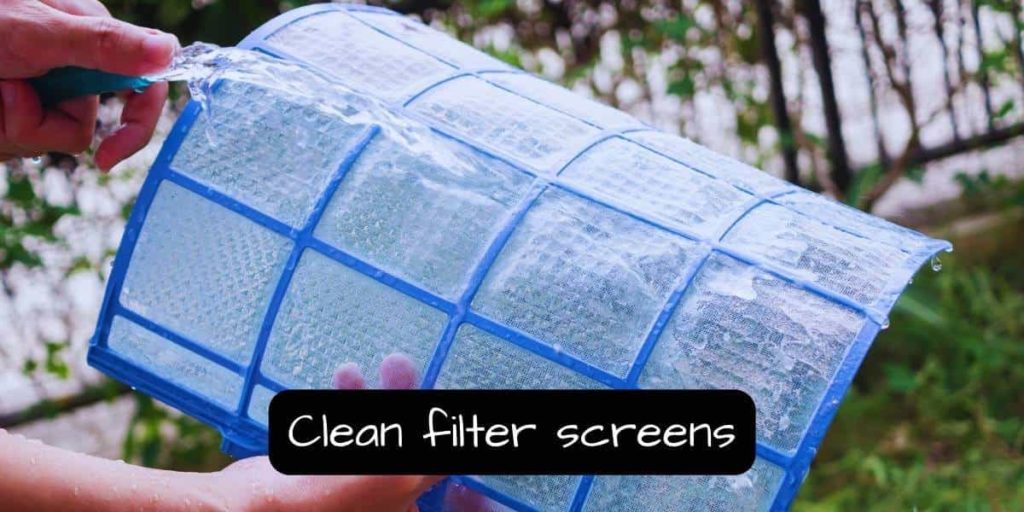
Place them in a slight diagonal using a chair, fence or similar object as support.
Use the garden hose to soak them but keep in mind that window screens tend to collect much more dust and dirt and you might need to use a universal detergent and a brush to clean them.
Then as the last step, rinse all the detergent or rinse them until you see there is no dirt left and the water that drains from them is clean.
6. Use a gardening hose to clean the mower deck
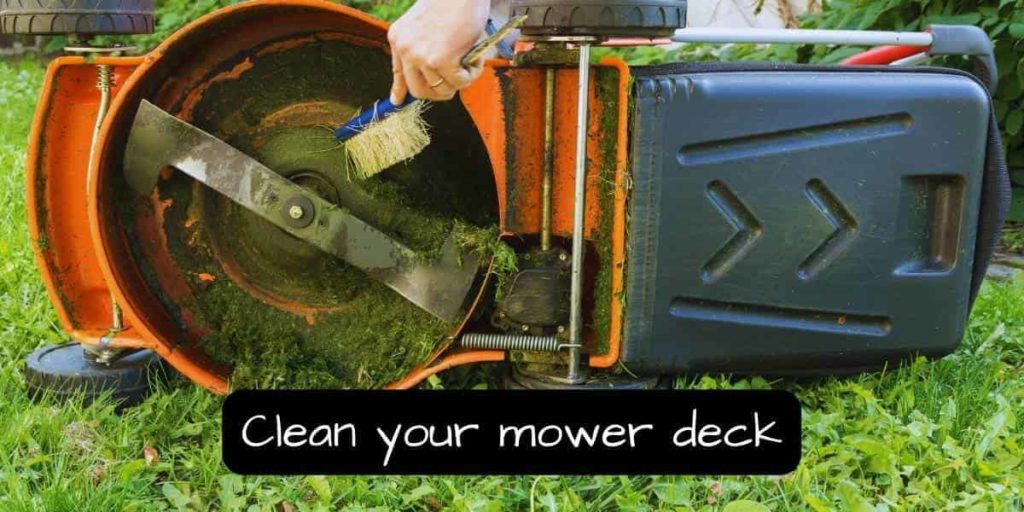
Mower decks may be equipped with a wash port on top to which you can connect your garden hose to clean the underside of your deck. The hose jet will be projected on the underside of the deck through a water valve which removes all the leftover grass and dirt.
In case this is not enough, and the underside of your deck is still not as clean as you would like it to be, you can simply connect your sprayer gun to the water hose, set it on power mode, lift the deck in a vertical position and rinse it by using the garden hose.
The top of the deck can also get dirty, collecting cut-off grass and dirt. You can simply rinse all of that off, using a garden hose with a sprayer nozzle.
7. Use a backyard hose to wash your car
One of the most common alternative tasks that you can give to a water hose is using the hose to wash your car.
You don’t need a pressure washer to properly clean a car. Instead, you can use your standard gardening hose with the hose nozzle set on jet spray.
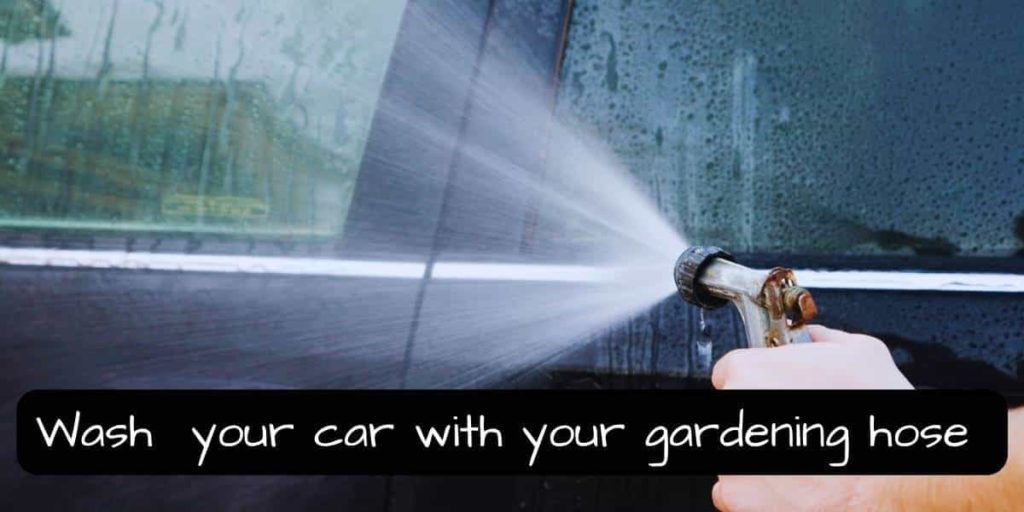
To properly wash your car with a hose, you will need:
- a regular water garden hose with a sprayer installed
- a bucket filled with water
- a microfiber brush or a sponge
- car wash solution
First, spray water generously all over the car using the water hose, and don’t forget to do the same on the wheel level. This step is important as it will remove most of the accumulated dust and will prevent scratches on the car paint while you are using the microfiber brush.
Poor the car wash cleaning solution into the bucket and mix it with water using the hose to create a nice foam. Soak in the microfiber brush or the sponge and start spreading the car wash on the entire surface of the car giving it a good but gentle scrub. Rinse the brush from time to time with the garden hose, in case it gets dirty. To not rinse the brush into the bucket, rinse is separately to remove the dirt.
Once you are finished with the brushing step, use the garden hose again to spray off all the soap from the car surface.
It is recommended to use a car absorbent towel to soak up the water and dry the car surface instead of waiting for the water to dry off naturally, as this prevents water stains to appear.
8. Use your standard water hose as a siphon
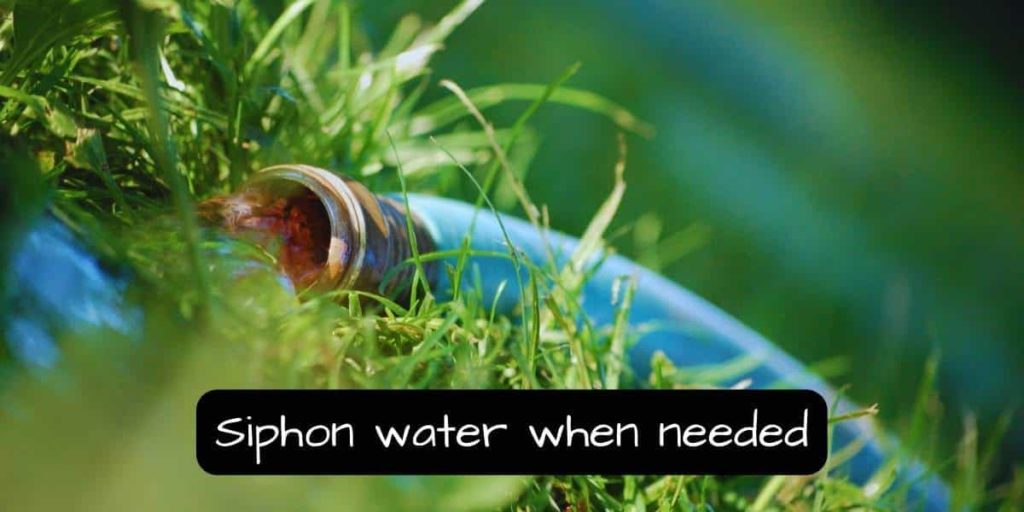
You can use your normal garden hose as a siphon to drain the standing water in the garden or yard if you have such areas where water accumulates, and the surface remains soaked in water for long periods of time. You can also use the hose to drain a pool or transfer water from one container to another.
The drainage point should always be at a lower level than the source from where you need to drain the water.
The process in simple steps is to connect the hose to the faucet, turn on the water until all air from the hose is removed, and then turn off the nozzle on the other end of the hose.
Place the nozzle end where you want to drain the water but keep in mind the drainage space must be at a lower elevation than the puddle location.
Turn off the faucet, disconnect the hose from the faucet but make sure no water is spilling out of the garden hose, keep the hose end in a vertical position or close the valve on the hose if you have a valve installed. The purpose is to keep the entire hose filled in with water.
Place this hose end in the standing water that you need to drain. Make sure it is covered in water and air is not getting in the hose. Air will stop the siphon.
Remove the nozzle from the other hose end and the siphon will start.
9. Use the garden hose to play with water in the summer
Summertime fun is available at any corner, especially while choosing to play with water.
There are a lot of water games that you can play by using a common garden hose. But you can always invent new ones.
We are automatically thinking of Slip ‘n’ Slide, noodle sprinkler, splash play, or water hose limbo.
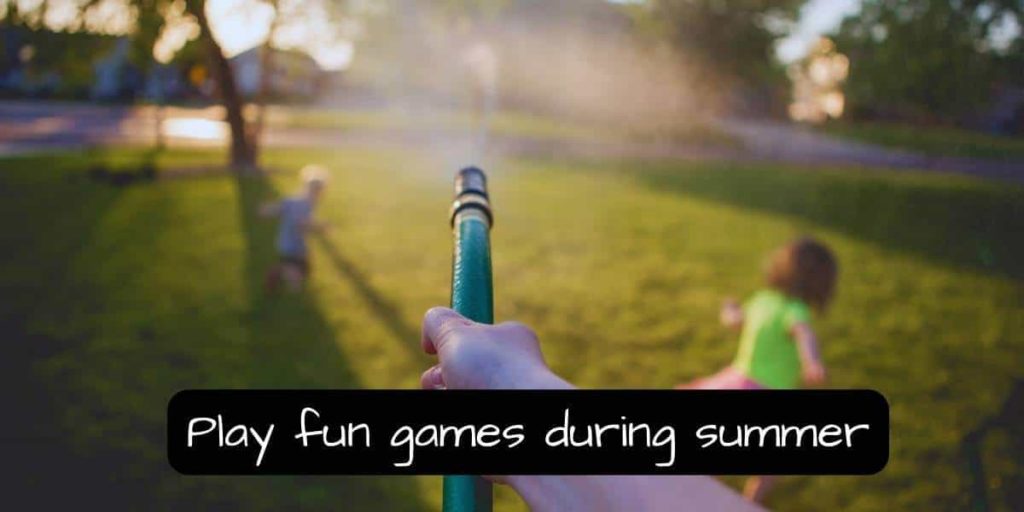
10. Use your backyard garden hose to play with your pets or even give them a bath
Well, kids are not the only ones who would have a blast while playing outdoors with water.
Dogs are also huge fans of water games.
So why not trying some different activities to do with your dog during summer? Use a garden hose running water as the perfect toy to play with!
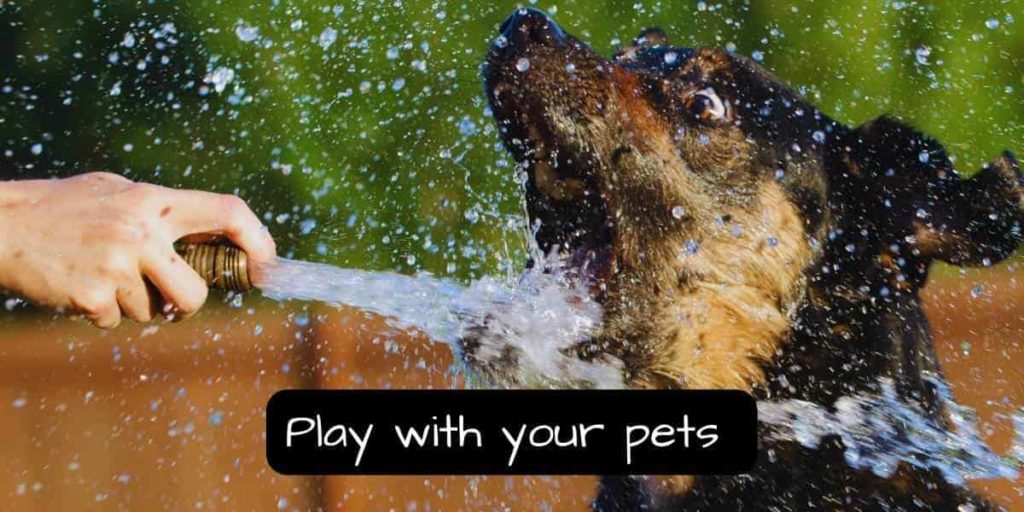
11. Use your hose to wash your homegrown vegetables
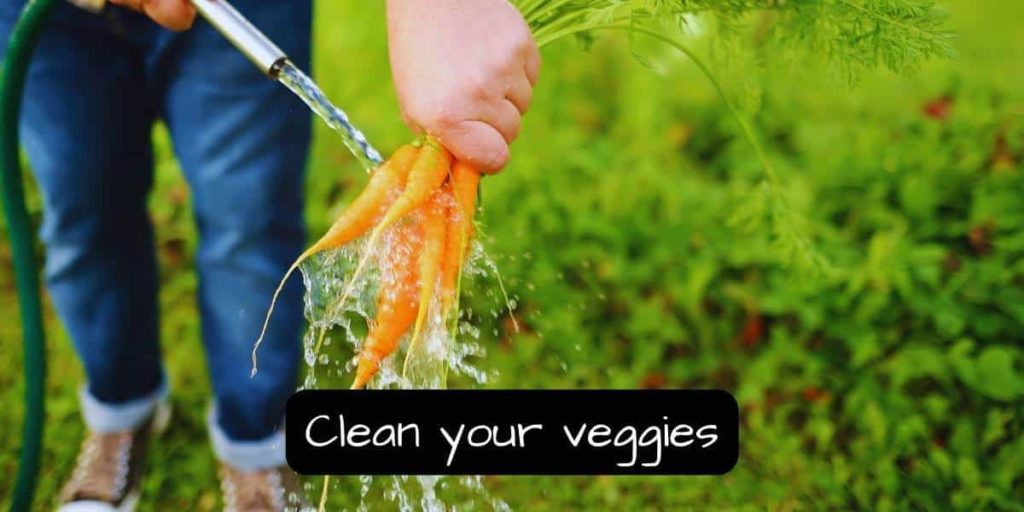
We always keep a gardening hose available near our vegetable garden.
This way, when we take out the veggies that we need for preparing dinner, we can give them a quick wash directly in the garden.
We clean them more thoroughly in the kitchen sink but still, it is better to wash away the thicker layers of soil outdoors.
Conclusion
We can all agree that gardening hoses are not just used for watering plants. There are probably tens of ways to using them.
In this post we covered the main 11 alternative uses for a garden hose. Scroll among all these options and choose the ones you find appropriate for your specific case!
